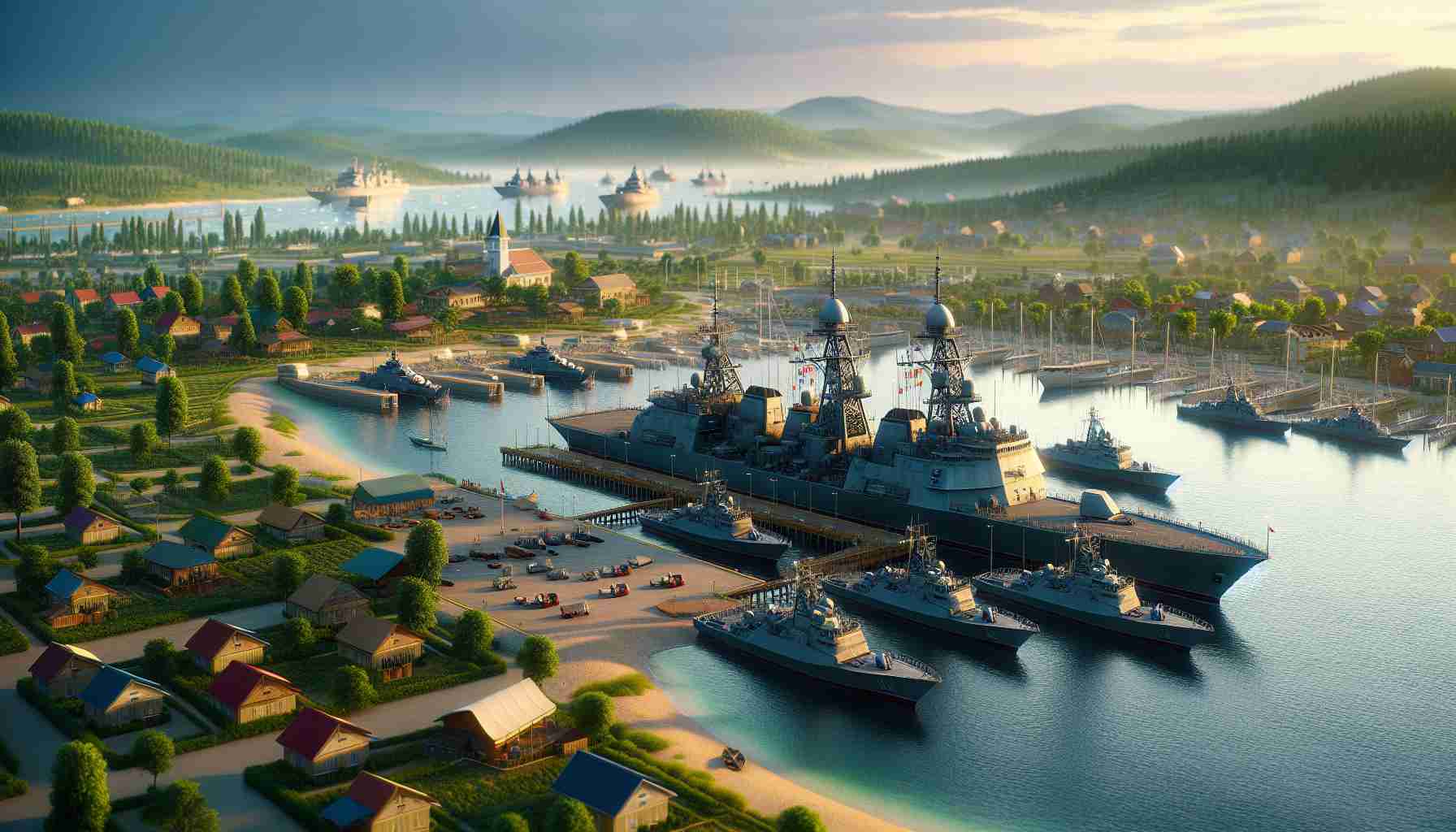The situation around Russia’s naval base in Syria has taken a significant turn. Observations made from satellite imagery reveal a stark difference in the state of the base before and after the fall of Syrian President Bashar al-Assad.
Recent assessments show that a number of warships, which were previously stationed at this strategic location, are notably absent. This disappearance raises numerous questions regarding Russia’s military strategy in the region and the impact of the ongoing conflict. The naval base, located in Tartus, was established to enhance Russian military presence in the Mediterranean and support its regional allies.
Visual comparisons of satellite images highlight the reduction of naval assets, indicating potential shifts in operational readiness or changes in strategic priorities for Russia. The previously bustling base, which served as a critical point for Russian naval operations, now appears diminished as the landscape of military engagement in Syria evolves.
The implications of these changes could be profound, not only for Syrian sovereignty but also for the balance of power in the region. Military analysts are closely monitoring the situation, as the loss of naval capabilities could alter the dynamics of Russian influence in the Middle East. As the conflict continues, all eyes will be on Russia’s next moves in this complex geopolitical landscape.
Unraveling the Future of Russia’s Naval Presence in Syria
Analyzing Changes at Russia’s Tartus Naval Base
Recent developments at Russia’s naval base in Tartus, Syria, have brought major shifts to the geopolitical landscape of the region. Observations from satellite imagery reveal a concerning trend: warships that were once a regular presence at the base are now conspicuously missing. This situation raises critical questions regarding Russia’s military strategy and its implications for regional stability.
Key Features of the Tartus Naval Base
1. Strategic Importance: The Tartus base has long served as a vital asset for Russia, providing access to the Mediterranean and acting as a launching point for operations in the Middle East. The facility was primarily established to fortify Russia’s military presence and support allied nations.
2. Operational Capacity: The naval base was previously equipped to host multiple warships and perform various military operations, including logistics support and fleet replenishment.
Current Situation and Observations
Recent satellite imagery comparisons depict a stark contrast to the vibrant activity that characterized the base prior to key events in the Syrian conflict. The absence of naval assets may indicate:
– Shift in Strategy: Analysts suggest that the reduction in naval forces could reflect a strategic recalibration by Russia, possibly focusing on other military priorities or reallocating resources in response to the evolving conflict.
– Operational Readiness: The diminished naval presence might impact Russia’s operational readiness, potentially weakening its influence and response capabilities in the region.
Implications of the Changes
1. Regional Balance of Power: The reduction of Russian naval capabilities has the potential to alter the balance of power in the Middle East. The ability of regional players to capitalize on this shift could exacerbate existing tensions, as rival nations might seek to expand their influence.
2. Geopolitical Analysis: Military analysts assert that close monitoring of subsequent developments is crucial. The changes at the Tartus base could signify a broader re-evaluation of Russia’s commitments and ambitions in the Middle East.
Pros and Cons of Russia’s Naval Strategy in Syria
Pros:
– Enhanced military presence in the Mediterranean.
– Support for allied nations in times of conflict.
– A strategic foothold for Russia’s international maritime operations.
Cons:
– The risk of overextension in military endeavors.
– Potential for increased vulnerability without adequate naval assets.
– Complications arising from regional power dynamics.
Future Trends and Predictions
As the conflict in Syria continues, several trends may emerge:
– Increased Monitoring: Expect heightened surveillance and analysis of military movements in the region, particularly around key installations like Tartus.
– Potential Diplomatic Engagements: Russia may engage in new diplomatic efforts to stabilize its interests amid an evolving situation.
– Shifts in Collaboration: Changes in military posture may lead to altered alliances, as nations re-evaluate their strategic partnerships.
Conclusion
The waning presence of Russian naval assets at the Tartus base marks a significant development in the Syrian conflict and highlights the complex and shifting international relations in the region. As global interest in Middle Eastern dynamics grows, the implications of Russia’s military strategy will need to be closely analyzed to understand future outcomes.
For further information on military developments and geopolitical analysis, check Global Security for insightful updates and expert commentary.
